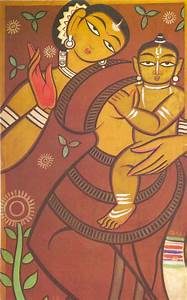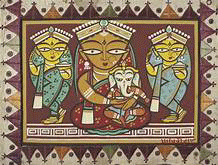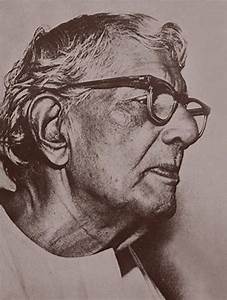Date of Birth: April 11, 1887
Place of Birth: April 24, 1972
Date of Death: Beliatore, West Bengal, India

Place of Death: Kolkata, India
Profession: Painting
Father: Ramataran Roy
Awards: Padma Bhushan (1954), Viceroy’s gold medal (1934), Fellow of the Lalit Kala Akademi (1955)
Walk into an average middle-class art-loving household of West Bengal, and chances are that you might come across a well-preserved portrait of Jamini Roy rather than a fancy looking artwork of one of India’s many modern artists. The paintings had to be well-preserved, for Jamini Roy would not have sold his work, had he doubted his buyer’s passion for art. While most of the Indian painters of the 20th Century were excited about modern art, which fetched them good returns, Jamini Roy stood out for his love towards Indian roots. His passion for simple Indian folk art was such that he did not care about selling his works for fancy prices and only sold them for as little as 350 rupees. And he would buy back his works, should he find out that his paintings are maintained poorly by the buyer. Influenced by the simplicity of Kalighat paintings (Indian folk art), Jamini Roy gave up on modern art and stuck to his roots, winning millions of hearts in the process. He also gave up on using European paints and even canvases to replace them with suitable alternatives. In 1954, the Government of India honored him with Padma Bhushan for his contribution towards art.

Childhood and Early Life
Jamini Roy was born in the year 1887 at Beliatore village in the Bankura district of West Bengal. Roy was born into an affluent family of land-owners. His father, Ramataran Roy, resigned from his government services to pursue his interest in art. In the year 1903, when he was only 16 years old, Jamini Roy left his village and made it all the way to Calcutta (now Kolkata) to enroll himself at the Government College of Art. There, he received education under Abanindranath Tagore, famous for his valuable contribution in the field of modern art. Tagore was the vice principal of the college and trained Roy as per the prevailing academic tradition. Roy finished his education in 1908 and was given a Diploma in Fine Arts. Roy was true to the art that he learned and started painting in accordance with the Western classical style. But he straightaway realized that his heart belonged to some other form of art.
Career

Jamini Roy started off his career as a portrait painter but wasn’t entirely happy about being a portrait painter who worked for commission. It was in the year 1925 that he heard his true calling outside the famous Kalighat temple in Calcutta. After observing a few Kalighat paintings, displayed outside the temple, Jamini instinctively knew what his preference and interest was, when it came to art. He knew that the Bengali folk art could be used as a stone to bring down not two but three birds –a way to simplify and portray the lives of common people; to make his art accessible to all; to bring back the glory of Indian art. From that moment onwards, his paintings started reflecting the Kalighat style of art. By the early 1930s, Jamini Roy became fully conversant with the lines of the Kalighat idiom and produced more number of art works. In 1938, his art works became the first Indian paintings to be displayed at a British-ruled street in Calcutta. Jamini’s thought process began to bear fruit in the 1940s when his works were bought by average middle-class Indians. What surprised him though was the interest shown by the European community towards purchasing his paintings. With the passage of time, his paintings were only reflecting the indigenous art of Kalighat painting, along with the terracotta’s of the Bishnupur temple. In the following years, his works were exhibited at prestigious shows in places like London and New York City. By now, Jamini Roy had accomplished what he had intended to do when he first switched over from the Western classical styleto the folk art of Bengal.

Jamini Roy’s Style
Jamini Roy’s paintings that belong to the early 1920’s reflect the influences of the Bengal School of art. Initially, he came up with some excellent paintings that marked his entry into the Post-Impressionist genre of landscapes and portraits. Later in his career, several of his many paintings were based on the everyday life of rural Bengal. Then, there were numerous ones revolving around religious themes like Ramayana, Radha-Krishna, Jesus Christ, etc. Jamini Roy also painted scenes from the lives of the aboriginals called Santhals. Throughout his works, his brush strokes were largely bold and sweeping. Around mid-1930s, Jamini Roy moved away from the conventional practice of painting on canvases and started painting on materials like cloth, mats and even wood coated with lime. He also started experimenting with natural colors and pigments derived from mud, chalk powder and flowers instead of European paints.

